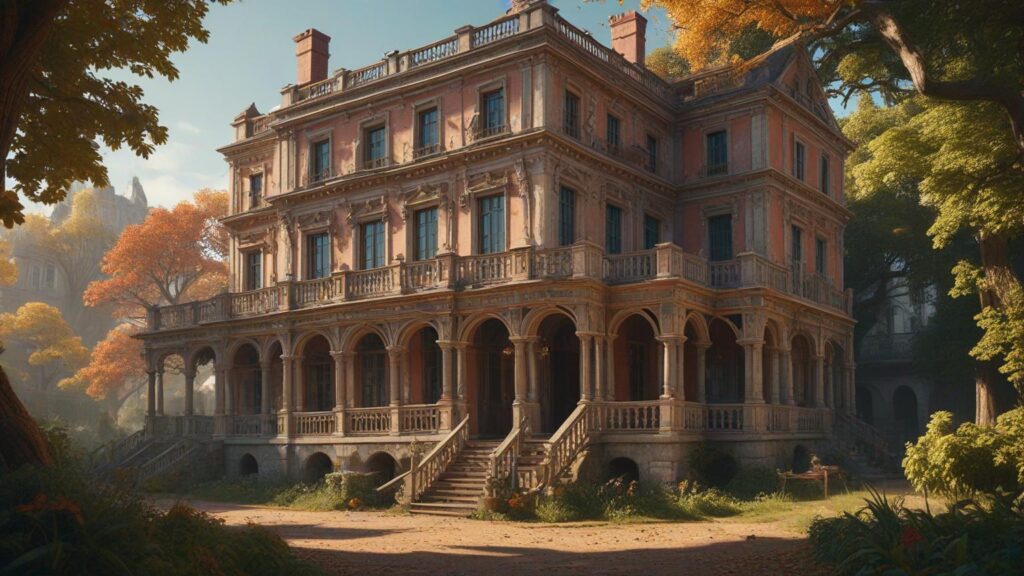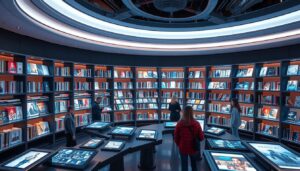
Discover the Best Book Recommendations Today
Finding great books can seem hard, but with the right help, you can find your next favorite. A good website for book recommendations can guide
The Official Website of E.B. Brown

The evolution of period films based on literature has been shaped by changing cultural, technological, and artistic trends. Historical novels, which offer vivid portrayals of past eras, have long been a rich source for filmmakers looking to bring the past to life on screen. Over the years, adaptations of historical fiction have evolved from simple, straightforward retellings of events to more complex and cinematic explorations of character, theme, and atmosphere. From historical novels to sweeping epics, the transformation of period films based on literature reflects broader shifts in how we view history, storytelling, and the role of cinema as an artistic medium.
In the early days of cinema, period films often relied on traditional storytelling, with a focus on historical accuracy and linear narratives. Classic examples like Gone with the Wind (1939) and Ben-Hur (1959) drew heavily from literary works to construct grand, sweeping narratives that focused on historical events, famous figures, and broad social changes. These films were often epic in scale, utilizing large sets, elaborate costumes, and grandiose production designs to immerse audiences in the past. Such films were marked by a sense of grandeur, and they often adhered to a linear, chronological structure, offering viewers a traditional understanding of history through the lens of individual stories. In many ways, these early period films were designed to glorify the past, presenting historical events through a lens of nostalgia and national pride.
The adaptation of historical novels during this time also focused heavily on spectacle. Gone with the Wind, based on Margaret Mitchell’s 1936 novel, is a quintessential example of a period film that combined romance, drama, and historical context. Set during the American Civil War and Reconstruction, the film offered an extravagant visual representation of the Southern landscape, while weaving in the personal struggles of its central characters. Despite criticisms of its portrayal of race and the Civil War, the film’s visual spectacle was unparalleled at the time and set a standard for period adaptations. The lavish costumes, intricate set designs, and sweeping landscapes allowed audiences to experience the grandeur of the past, albeit through a somewhat idealized lens.
In the 1960s and 1970s, as filmmaking techniques evolved and social attitudes shifted, the approach to period films based on literature began to change. Filmmakers became more interested in exploring the complexities of history and the human experience, moving away from glorified portrayals of the past to more nuanced and sometimes critical examinations. In this period, historical accuracy became a more prominent focus, as filmmakers strived to depict history with greater fidelity and attention to detail.
One of the most significant changes during this time was the shift toward more intimate and personal portrayals of historical events. Instead of focusing solely on large-scale spectacles, filmmakers began to delve deeper into individual stories, highlighting the struggles and emotions of everyday people. This shift can be seen in films like Dr. Zhivago (1965), based on Boris Pasternak’s novel, which is set against the backdrop of the Russian Revolution. The film focuses not only on the political upheaval but also on the personal, intimate experiences of its central characters, exploring love, loss, and survival amidst historical change.
Similarly, The English Patient (1996), based on Michael Ondaatje’s novel, blended personal and historical narratives, exploring the impact of World War II on the lives of individuals. The film’s nonlinear structure, intimate focus on character relationships, and use of symbolism marked a departure from traditional period films and opened up new possibilities for adapting historical literature into cinema. The emotional depth and complexity of these films reflected a growing trend toward blending historical events with human drama, showing the personal consequences of larger political and social shifts.
The late 20th and early 21st centuries saw the rise of visually stunning and thematically rich period epics that embraced a more modern approach to storytelling. Filmmakers began experimenting with the visual style of historical films, using advanced cinematography techniques, CGI, and innovative production design to enhance the scope and atmosphere of period dramas. At the same time, a greater emphasis was placed on the emotional, psychological, and moral dimensions of historical narratives.
Films like Gladiator (2000), directed by Ridley Scott, and The Last of the Mohicans (1992), directed by Michael Mann, pushed the boundaries of traditional period films by blending intense action sequences with deep emotional stakes. These films maintained the grandeur of historical epics but also introduced a more complex and modern storytelling approach, focusing on individual heroism and personal vengeance. The violence and visceral nature of these films reflected a shift in how filmmakers approached the past, moving away from idealization and toward a more human-centered exploration of history.
The success of films such as The Lord of the Rings trilogy (2001–2003), based on J.R.R. Tolkien’s epic fantasy novels, also marked a significant shift in the types of period stories that were adapted to the screen. While Tolkien’s works are set in a fictional past, they draw heavily on historical themes, particularly those of war, power, and morality. The films combined cutting-edge technology with epic world-building, creating a cinematic experience that was both visually spectacular and emotionally resonant. The success of The Lord of the Rings demonstrated the continued relevance of the epic genre, even in an age of digital effects and fast-paced storytelling.
In recent years, the approach to period films based on literature has continued to evolve, with filmmakers taking a more inclusive and diverse approach to storytelling. Films like 12 Years a Slave (2013), based on the memoir by Solomon Northup, and The Woman King (2022), based on real historical events, highlight the stories of marginalized people, offering more nuanced and diverse perspectives on history. These films are part of a broader trend in cinema to revisit historical events through the lens of different voices, offering a more complex and varied understanding of the past.
At the same time, historical novels with epic or fantastical elements, like The Hobbit (2012), based on J.R.R. Tolkien’s work, continue to inspire filmmakers to create visually rich and action-packed period films. The blending of historical fiction with fantasy and myth has become a popular approach, as seen in the success of films based on novels like Game of Thrones (2011–2019), adapted from George R.R. Martin’s books, where real-world historical dynamics are interwoven with fantasy elements.
The evolution of period films based on literature has seen a shift from straightforward adaptations of historical events to more nuanced, emotional, and diverse interpretations of the past. As filmmakers continue to experiment with new techniques and storytelling methods, the relationship between historical novels and epic films will likely continue to evolve, blending the personal with the universal, the visual with the emotional, and the historical with the imaginative. Period films will continue to offer audiences a chance to explore the past, not just through the lens of history, but through the human experiences that define it.

Finding great books can seem hard, but with the right help, you can find your next favorite. A good website for book recommendations can guide

Connecting with fellow book lovers can open up new worlds and build lasting friendships. A local Reading Community offers a sense of belonging and enriches

The rise of digital publishing has made E-book Platform solutions more popular. With many online e-book platforms out there, picking the right one is key.